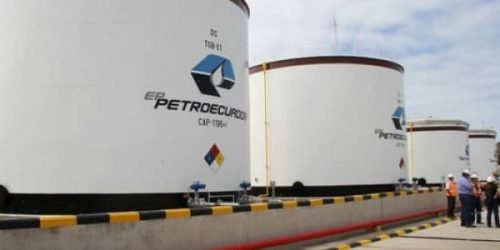The last year was difficult for Ecuador’s beaten-down hydrocarbon sector. Aside from the severe fallout from the COVID-19 pandemic and sharply weaker oil prices, the industry was rocked by yet another corruption scandal and a series of environmental disasters. Those events sharply impacted oil production, will deter urgently required investment and spark greater dissent among Ecuador’s indigenous communities. Like southern neighbor Peru, most of the equatorial country’s operational oilfields and infrastructure is in Ecuador’s portion of the Amazon basin. The region is inhabited by many indigenous communities who have become increasingly frustrated by the policies of Ecuador’s national government and the conduct of the petroleum industry. In Peru, growing dissatisfaction among many Amazonian communities with central government policies and the conduct of that country’s oil industry spilled over into violent protests.
That, along with earlier community blockades, not only caused operations at oilfields to cease but saw Peru’s National Society of Mining, Petroleum, and Energy release a November 2020 statement (Spanish) claiming the country’s oil industry was in crisis. Recent events indicate Ecuador is heading down a similar path. Ongoing environmental damage related to oil spills, flaring and other industry operations, deficient government spending on infrastructure, and rising inequality are all fueling considerable discord in Ecuador’s Amazon. Most of the Andean country’s producing oilfields are situated in the Oriente Basin, part of the upper Amazon River drainage basin, located in Ecuador’s northern Sucumbios and Orellana provinces.
Ecuador’s northern Amazon region contains what is believed to be one of the most biologically diverse places on the planet, the Yasuni National Park, and extensive indigenous communities. Many of the issues in the region are like those that have sparked violent protests against the petroleum industry operating in Peru’s Amazon. These include deep-seated grievances over the conduct of the petroleum industry and state-owned upstream oil company PetroAmazonas. There is a long history of the central government failing to invest in local infrastructure, notably hospitals and schools, and provide access to resources despite petroleum production being responsible for generating around a third of fiscal income. Escalating discontent means there is considerable potential for community blockades and protests against the oil industry if community grievances are not appropriately managed. During 2019 Quito was rocked by violent protests sparked by President Lenín Moreno’s decision to end government fuel subsidies, causing diesel and gasoline prices to almost double overnight. The protests escalated to the point where Moreno’s government was forced to flee the capital, Quito, for the safety of Guayaquil, Ecuador’s largest city. Many of the issues which caused the protests to intensify are like those afflicting communities in Ecuador’s Amazon. The COVID-19 pandemic is magnifying societal fissures while disproportionately impacting indigenous communities throughout South America. The pandemic revealed the deep social and economic fault lines that exist in Ecuador, which initially was one of the worst affected countries in Latin America. This includes the wide chasm between rich and poor as well as a lack of infrastructure and resources in impoverished rural regions, including the Andean country’s Amazon. Deep distrust of Ecuador’s central government and economically vital oil industry already exists, and some indigenous communities in the Amazon are blaming oil workers for spreading the virus.
Related: How To Play The Oil Price Rebound In 2021
Accidents and mishaps, which have plagued Ecuador’s oil industry for decades, are eroding what little trust remains among Amazonian communities in the country’s petroleum-producing regions. This is causing what is left of the oil industry’s social license to rapidly deteriorate and could eventually trigger protests. Earlier this year Ecuador experienced what was described as its worst oil spill in at least a decade. Mudslides during April 2020 ruptured the 450,000 barrel a day Oleoducto de Crudos Pesados (OCP) pipeline and PetroEcuador’s 360,000 barrel a day Sistema de Oleoducto Transecuatoriano (Sote) pipeline, which link Ecuador’s Amazonian oilfields to the Pacific coast port city of Esmeraldas. The incident caused an estimated 12,000 to 15,000 barrels of crude oil to be discharged into the Coca river which flows into the Napo, a tributary of the Amazon. The spill was so serious that crude oil was seen downstream in the Napo river and threatened the city of Coca’s water supply. Geologists and hydrologists had warned months earlier that geological events in Ecuador’s Amazon would trigger actions that could damage local oil infrastructure. It appears that the national government in Quito, which was still reeling from the violent 2019 protests and ongoing fiscal crisis, ignored those warnings. A lack of investment inadequately maintaining and overhauling Ecuador’s aging energy infrastructure was also believed to have contributed to the pipeline ruptures. Of considerable concern are claims from September and October 2020, six months after the oil spills occurred, that they have yet to be adequately mopped up with petroleum residue severely impacting communities along the Coca and Napo rivers.
Aside from the extensive environmental damage inflaming hostility from local communities toward the oil industry, the pipeline ruptures had a severe impact on Ecuador’s oil production. During April 2020, the Andean country’s oil output averaged a mere 208,062 barrels of oil daily, while for May it increased 60% to 333,369 barrels per day, well below the 532,648 barrels a day pumped during 2019. While November 2020 production had returned to normal with Ecuador pumping an average of 510,652 barrels daily, more than double the April low, Quito failed to meet its 2020 production target of 600,000 barrels daily. For the first 11 months of 2020, Ecuador only pumped 476,000 barrels daily, significantly less than the 600,000 barrels daily originally targeted. This stresses that, unless the central government boosts investment in Ecuador’s deteriorating energy infrastructure, it will be unable to benefit from the Andean country’s vast petroleum wealth.
Related: U.S. Oil Executives Cautiously Optimistic About 2021
Environmental mishaps related to the oil industry operations are occurring at an alarming frequency. Ecuador’s indigenous Waorani filed a lawsuit in December 2020 alleging PetroOriental, the operator of blocks 14 and 17 in the Amazonian Orellana province, has been flaring and venting natural gas in a manner damaging the local environment. The Waorani assert PetroOriental’s activities are contaminating the surrounding land, rainfall, and water sources. PetroOriental is a subsidiary of Chinese state-controlled China National Petroleum Corporation and China Petrochemical Corporation and produces around 10,000 barrels of crude oil daily from those operations. A June 2020 research paper investigating the impact of petroleum production in Ecuador’s Amazon identified that the region was subject to considerable contamination from oil industry operations. The authors claim are responsible for a higher incidence of health problems among the local population. The authors went on to assert that provinces in those petroleum-producing areas had inadequate environmental and other regulatory controls, which is responsible for higher than acceptable levels of pollution.
If those issues, including further oil spills, persist in Ecuador’s oil producing provinces they will not only further impact the health of the local population but effectively destroy what remains of the domestic oil industry’s social license. There is the potential for these issues to manifest as community blockades, protests, and violent seizures of industry infrastructure, as has happened in Peru’s Amazon. That would make it exceptionally difficult for energy companies to continue operating in those areas without disruption. The severe impact of the pandemic on Ecuador’s economy, which sees the IMF predicting GDP contracted by 11% during 2020, and the ongoing fiscal crisis gripping Quito, means any disruption to petroleum production would severely impact Ecuador’s petroleum-dependent economy. If opposition to the oil industry increases further, blockades and protests could become regular incidents that disrupt oil industry operations and production. Such events will clearly deter urgently required investment by foreign energy companies to develop Ecuador’s considerable oil reserves totaling 8 billion barrels.





